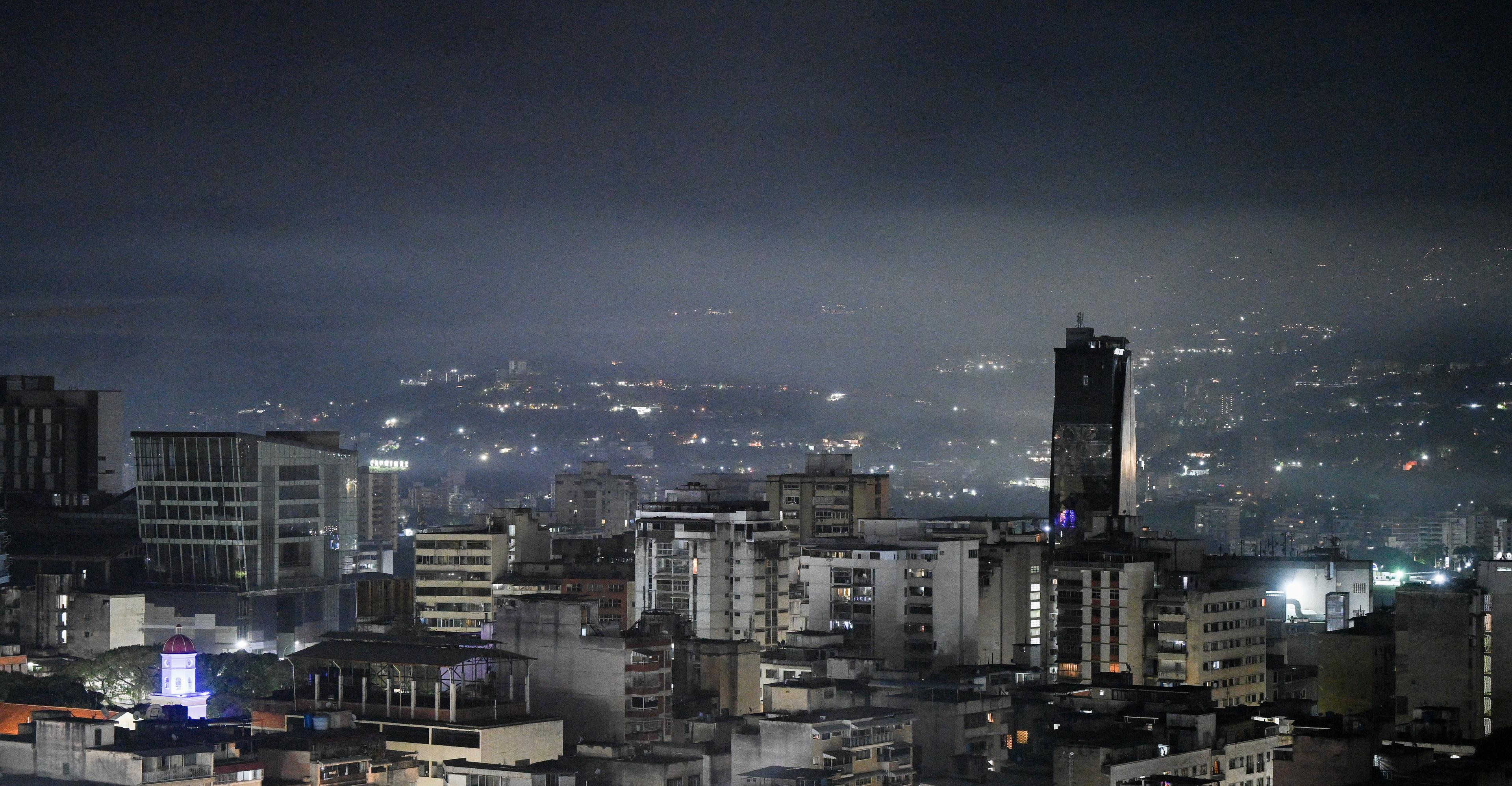Cities have always been havens for immigrants. So why are they struggling now?
Congressional inaction has created a broken immigration system. But cities can do more for migrants, too.


Come nighttime in Boston, some migrant families with no place to stay are put in cabs and sent to Logan International Airport — where, according to some estimates, more than 100 people, some of them children, sleep by baggage claim. During the day, they’re directed to Massachusetts’s family welcome centers, set up by the state to help recent arrivals with housing and other services, only to make their way back to the airport for another night.
For some families, this cycle goes on for more than a week at a time, turning part of the airport into a de facto shelter. It’s a symptom of the state’s broader immigration problems and just one example of how cities across the country have been struggling — and, in many cases, failing — to meet the basic needs of a growing migrant population.
The Biden administration has presided over a record number of migrant arrests at the southern border. More than 2 million people, the majority of them families, have been released into the country by US Customs and Border Protection over the last three years while they await legal proceedings to determine whether they will be deported. Roughly 6 million people have been taken into custody at some point over the same time period.
In city after city — from New York to Chicago to Washington, DC — their arrival has made evidence of the United States’ broken immigration system more visible, as in the case of Boston’s airport. Because despite these cities’ histories of attracting and becoming homes to immigrants, many of them have been caught largely unprepared to handle the sudden increase in the number of migrants reaching their jurisdictions.
“As the resources get more scarce, as the infrastructure becomes more overwhelmed, and particularly because of the lack of coordination, what we are seeing are more extreme events happening, including encampments at Logan Airport — something that would’ve been inconceivable a year ago and is now happening in our own backyard,” said Iván Espinoza-Madrigal, the executive director of Lawyers for Civil Rights, a legal advocacy organization that has been providing assistance to migrants in Boston.
The federal government shoulders much of the blame for the crisis: For years, Congress has failed to reform immigration laws. It has failed to ease bottlenecks, such as application processing times for people looking to work and stay in the United States. And it has failed to adequately fund services that help migrants navigate the many bureaucratic hurdles that come their way. As a result, far too many migrants are left in legal limbo for far too long.
Democratic mayors and governors, who often like to pride themselves on being more pro-immigrant than their Republican counterparts, have been scrambling to adjust to that new reality as local and state governments are met with the high financial costs of hosting the growing migrant populations. That’s led some Democratic leaders, such as New York City Mayor Eric Adams, to declare that “there’s no more room” for asylum seekers in their jurisdictions, increasing pressure on the Biden administration to do more to address the problem.
Instead of passing blame and waiting around for Congress to act, there’s more that cities and states, along with the Biden administration, can do to alleviate some of the stresses on the immigration system and better help migrants integrate into communities across the United States.
How northern cities became central to the country’s immigration crisis
Over the last couple of years, many cities have seen a sharp increase in the number of migrants — most of whom come from Central and South American countries but who are also coming from all over the globe, including China and India. (Regardless of where they come from, they may be fleeing their home countries for similar reasons, including conflict, persecution, and poverty.)
New York City, for example, has attracted more than 150,000 migrants since 2022, straining services like the city’s already struggling shelter system and further exposing ongoing issues that have long burdened existing residents — like, say, the dearth of affordable housing.
“It’s an unprecedented crisis,” said Muzaffar Chishti, a senior fellow at the Migration Policy Institute. “We have never had this number of people come in such short periods of time.”
Most of the released migrants are in active deportation proceedings, which can take years to resolve. During that time, they can stay in the United States but have to navigate a patchwork of laws and safety nets to stay afloat. Some migrants can get work authorization, for example, while others can’t. And though federal benefits are harder to come by than in the past, states provide varying levels of services, from housing to health care to education.
“New York has been welcoming migrants from its very inception, and so people expected that, even though there is a significant crisis at the border, that this would not affect New York in any different way than prior chapters have,” Chishti said. “But it all changed, and it changed not necessarily because of the numbers … it changed because it happened in a very dramatic, very visible, and very targeted way.”
In 2022, Texas Gov. Greg Abbott started busing thousands of migrants out of his state to Democratic-run cities without notice. Florida Gov. Ron DeSantis, also a Republican, has pulled similar stunts. These programs are political theater: “There’s no talking around it that Governor Abbott used this as a politically motivated attack on blue states and blue cities in the country,” Chishti said.
More than 100,000 people have been shuttled across state lines this way, and there have been allegations that migrants were lured to participate in these programs under false pretenses. The saga has resulted in lawsuits — and tragedy. A 3-year-old girl died of pneumonia while riding a bus from Texas to Illinois; the journey was part of Abbott’s program.
What started out as a crass political ploy has been followed by a sustained migration pattern that adds to the backlog for cities’ support services. But it’s also true that the busing programs — which have failed to solve migrants’ struggles but succeeded in getting Democratic mayors and governors to pressure the Biden administration on immigration — were only made possible by the absence of any serious planning effort to connect migrants to jurisdictions that have the infrastructure, capacity, and preparedness to support them.
“We are seeing a complete lack of federal coordination and anemic federal support,” said Espinoza-Madrigal, who represents migrants in a lawsuit filed after they were flown from Texas to Martha’s Vineyard. “The unfolding migrant crisis is the result of federal neglect.”
What more can cities do?
Pointing fingers at federal lawmakers is certainly warranted, but city and state leaders’ hands aren’t tied. “The argument by New York is that immigration is a federal responsibility — like, ‘This is not our responsibility.’ That isn’t really true,” said Yael Schacher, the director for the Americas and Europe at Refugees International. “New York is going to reap enormous benefits. Yes, it’s a federal responsibility to decide who comes in and who has to go … but after people are here, that’s everybody’s responsibility.”
That’s not to say that the federal government should take its time in addressing this issue. While it has not necessarily left states and cities to fund migrant assistance programs on their own, it has fallen far short of providing the financial assistance that those jurisdictions actually need. Schacher pointed out that Congress has also drastically restricted migrants’ access to social programs over the years, and that’s put considerably more pressure on local governments.
As of now, Congress doesn’t seem interested in passing any new immigration laws. On Wednesday, the Senate failed to pass an an aggressive and fairly right-wing immigration deal, which would have dramatically clamped down on border security, made it harder for people to qualify for asylum, and streamlined the work authorization process. House Republicans had declared it “dead on arrival” before the votes were cast.
Without Congress, it’s unlikely that the federal government will be able to sufficiently support local governments and nonprofit organizations providing support services to migrants. But money is not the only thing that’s missing.
For the cities receiving a large share of migrants, two things in particular have made this migration wave impose such a high financial cost. First, there has been a notable rise in the number of migrant families with children, who are more vulnerable and rely more heavily on public services than those arriving alone. Second, many of those among the current wave of migrants coming to the United States don’t have relatives or friends who already live here and can help them settle in.
“We are seeing a large number of families without immediate contacts or connections in the United States,” Espinoza-Madrigal said. “This generates a host of challenges. It means that people don’t have someone to rely on immediately upon arrival. It means that the state and federal government need to coordinate much more aggressively around housing and other immediate needs.”
As experts told Vox, one of the most pressing needs for cities, states, and the migrants they’re accepting is better coordination at all levels: Cities should be working with surrounding counties to share the responsibility of housing migrants and financing the services they need; states should form regional consortiums to strategically plan where migrants can settle; and the federal government should play a more active role in finding appropriate jurisdictions to send migrants to, such as those where migrants have existing family networks or those with a city or organization willing to help them find housing and employment opportunities.
That’s hardly an unheard-of concept. In fact, it’s how the federal government handles refugee resettlement, working with existing family networks, nonprofits, and religious organizations to properly match refugees with strong support systems.
“We desperately need regional coordination for the migrant crisis to be more effectively addressed and resolved,” Espinoza-Madrigal. He noted that within Massachusetts, there is “minimal coordination,” and nonprofits from other cities in the state are constantly reaching out to his organization to ask for help finding basic services like access to translators. “Why can’t the commonwealth create a clearinghouse where technical assistance, translation support, and other guidance can be coordinated and curated in a much more effective and organized manner?”
Some government initiatives have worked well and could serve as a model for more ambitious planning, Espinoza-Madrigal said. For example, when Massachusetts partnered with the federal government and hosted work authorization clinics for two weeks, the number of work permits for migrants in the state surged — from roughly 800 in mid-December to over 2,700 by the end of 2023.
State governments should also partner with their neighbors. That way, instead of New York City sending migrants upstate, as its mayor planned to do, it could work with jurisdictions in New Jersey or Connecticut to help people settle in the immediate metro area, so that surrounding counties could help cover some of the financial costs imposed on New York and migrants with work authorization could still access job opportunities in the region. That would ultimately benefit all jurisdictions involved because it would help address regional labor shortages and broaden participating jurisdictions’ tax bases.
And the federal government should be more thoughtful in deciding where to direct migrants when they leave federal custody, taking into consideration things like housing affordability and job opportunities.
“We know there are some places in this country, like St. Louis, for example, who are dying for workers and actually have housing,” said Schacher, from Refugees International. “For people who have relatives or friends, this isn’t as big of an issue, but for people who actually don’t have a place to go and what they need most is affordable housing and the possibility of a job, then maybe they should be directed towards certain places.”
For its part, the Biden administration is aiming to admit more refugees from Latin America, potentially giving some migrants who would otherwise opt to cross the border without prior authorization an alternative entry point into the country. But that level of coordination and planning ought to be applied to all migrants. “We have so much less political will to think of these folks as refugees in this political environment,” Schacher said.
In the end, that’s what’s stopping a lot of cities and states from more competently resettling migrants — not just congressional inaction, but that lack of political will, too.
Eagles stand by rest call despite losing 2-seed
- 9 hours ago

Govt announces no increase in gas prices for next six months
- 6 hours ago
Kelce on when he'll decide future: 'Who knows?'
- 9 hours ago
Year in Review: 2025 takeaways and a look ahead to 2026
- 9 hours ago
Somalia calls Israeli FM visit to Somaliland an ‘incursion’
- 4 hours ago
Venezuela’s Machado says she hasn’t spoken to Trump since October
- 11 hours ago
Pakistan U-19 beat Zimbabwe by 9 wickets to win Tri-Nation series
- 5 hours ago
India still bears the stain of operation Sindoor: DG ISPR
- 8 hours ago

What are gold prices in Pakistan, global markets today?
- 5 hours ago
Variant Bio launches AI-powered platform for drug discovery using genetic data
- 4 hours ago
Bangladesh expresses interest in benefiting from PAF expertise
- 5 hours ago
NDMA sounds alarm on harsh winter cold grip tightens across Northern Pakistan
- 5 hours ago








